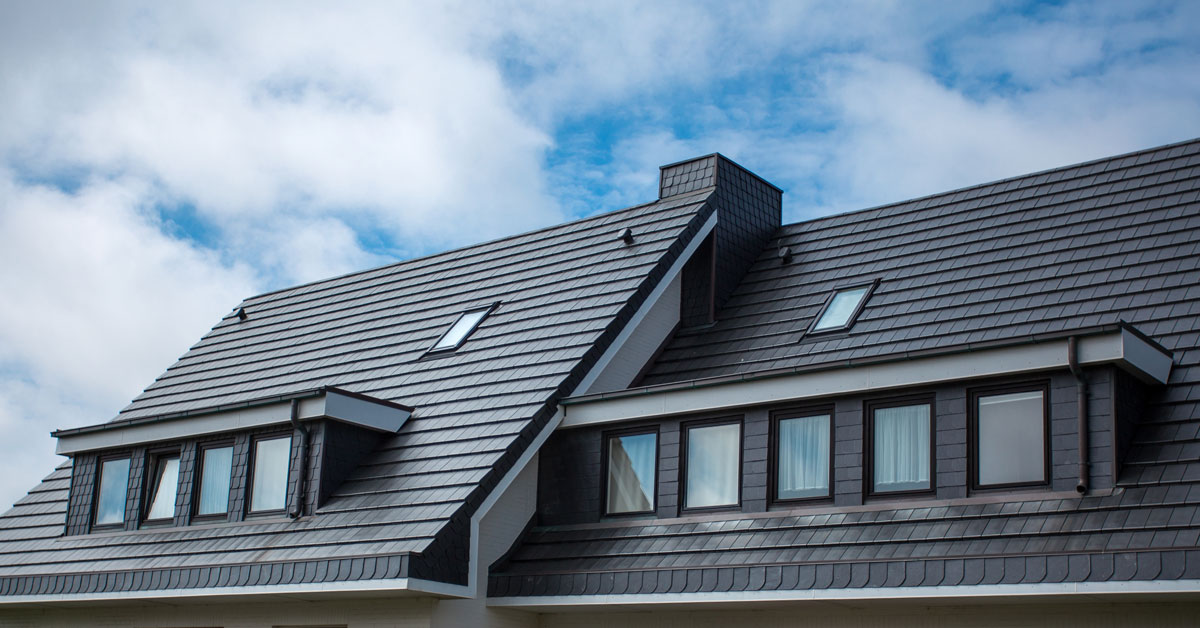Important Questions to Ask Gainesville Roofing Companies Prior To Employing
Important Questions to Ask Gainesville Roofing Companies Prior To Employing
Blog Article
Best Practices for Ensuring Appropriate Roof Covering Ventilation
A balanced intake and exhaust vent proportion, frequently 1:300, plays a pivotal function, with consumption vents preferably put at the reduced side of the roof covering for great air access and exhaust vents at the top for cozy air departure. Keeping insulation away from vents is essential to protect against air flow limitation.
Understand Ventilation Essentials
Appropriately comprehending ventilation basics is essential for making certain the durability and efficiency of roof. Reliable air flow mitigates moisture buildup and temperature level extremes in the attic room, both of which can bring about considerable architectural damages in time. A well-ventilated roofing aids in avoiding typical concerns such as mold development, wood rot, and ice dams, which can endanger the integrity of the roof products and the underlying structures.
The primary goal of ventilation is to assist in the motion of air, enabling a constant exchange in between the interior and outdoor settings. This equilibrium is achieved through a combination of consumption and exhaust vents that collaborate to preserve optimum air movement. Intake vents, typically situated along the soffits or eaves, enable fresh air to get in the attic space, while exhaust vents, typically positioned at or near the roof covering ridge, allow hot, damp air to escape.
Secret aspects influencing the effectiveness of roof covering air flow include correct positioning, appropriate sizing, and guaranteeing that both intake and exhaust vents are unobstructed. Regular assessment and upkeep are crucial to identify potential clogs, damage, or inefficiencies in the ventilation system, thereby safeguarding the roof's performance and longevity.
Sorts Of Roof Vents
Roof covering vents play a vital duty in preserving reliable attic room air flow and, by extension, the overall health and wellness of the roofing system. Different kinds of roofing system vents are available, each with unique benefits tailored to certain roof covering requirements.

Soffit vents are mounted under the eaves and operate in tandem with roof covering vents to ensure a well balanced intake and exhaust system. By permitting cooler air to enter from below, soffit vents help with the expulsion of hot air via upper vents. Gable vents, located on the exterior wall surfaces of the attic room, offer another reliable solution, specifically in homes with saddleback roofs.
Examine Your Existing Air Flow

Next, consider the age and problem of your roof materials and ventilation components. Older systems may not adhere to current building regulations or may have deteriorated gradually, reducing their performance. Conduct a thorough assessment to recognize any type of indications of deterioration, such as corrosion, damages, or spaces that could jeopardize the system's efficiency.
Furthermore, determine the attic temperature level and moisture levels. Heats and moisture can check out here suggest insufficient ventilation - gainesville fl roofing companies. Make use of a hygrometer and thermostat to get exact readings, contrasting them with exterior conditions. Relentless discrepancies suggest possible issues that require attending to.
Setup Best Practices
Efficient setup of roof covering ventilation systems is critical for making certain optimum performance and durability. Correct installment begins with understanding the particular ventilation needs of the building and the roofing it covers. This entails computing the proper ratio of consumption to wear down vents, usually adhering to the 1:300 policy, which specifies one square foot of air flow for every 300 square feet of attic room flooring room.

The positioning of vents is similarly critical. Intake vents should be mounted at the roof's reduced edge, usually in the soffits, to enable awesome air to go into. Exhaust vents, on the other hand, must be set up near or at the roof's optimal to facilitate the departure of warm, wet air. This creates a natural air movement that aids keep temperature level and wetness balance within the attic area.
Seal all air vent connections thoroughly to stop air leaks and possible water infiltration. Usage top quality products and follow maker standards to make certain resilience and efficiency. In addition, incorporating ridge vents with baffles can significantly enhance airflow effectiveness by protecting against wind-driven rainfall and snow from getting in the attic room.
Eventually, accurate setup of roof covering ventilation systems reduces prospective problems such as mold growth, ice dams, and architectural damage, making certain the roof's integrity and the building's overall health and wellness.
Routine Upkeep Tips
Uniformity Find Out More in upkeep methods is essential to making sure the long-term efficiency of roofing air flow systems. Normal evaluations are important, ideally done biannually-- in the spring and autumn. Throughout these assessments, make certain that vents are without particles, nests, and various other blockages that can restrain air flow. Look for any indicators of wetness accumulation or mold and mildew, as these can indicate inappropriate air flow or leakages (gainesville fl roofing companies).
Cleaning the vents is one more crucial job. Make use of a soft brush or a vacuum cleaner to eliminate dust and particles from intake and exhaust vents. Be cautious not to damage the air vent displays or louvers throughout the procedure. Furthermore, inspect the attic area for any indications of water damages, which could compromise the stability of the roofing system.
Correct insulation is equally crucial. Make certain that attic insulation does not block the vents, as this can badly limit airflow. If any type of insulation has moved or resolved, reposition or replace it to preserve an effective barrier.
Lastly, change any type of damaged or missing out on components immediately. Busted vents, fractured tiles, or deteriorated blinking can all add to poor air flow and needs to be attended to without delay. Normal upkeep guarantees that the roof air flow system works optimally, therefore extending the life-span of the roof itself.
Conclusion
Making certain appropriate roof covering air flow is vital for preserving the performance and longevity of a roof. Adherence to the 1:300 intake and exhaust air vent proportion, paired with the calculated placement of vents, is necessary. Regular semiannual examinations, debris cleaning, and making sure insulation does not obstruct air flow are crucial techniques. Implementing these best techniques will foster a well-ventilated roof, thereby minimizing prospective issues associated with moisture buildup and extreme heat, ultimately prolonging the roof covering's life expectancy.
A well balanced intake and exhaust air vent ratio, typically 1:300, plays a critical duty, with intake vents ideally put at the reduced edge of the roofing system for trendy air access and exhaust vents at the height for my explanation cozy air leave. Consumption vents, usually situated along the eaves or soffits, permit fresh air to go into the attic room space, while exhaust vents, typically situated at or near the roof covering ridge, enable hot, damp air to leave.
Soffit vents are mounted under the eaves and work in tandem with roof vents to make certain a balanced intake and exhaust system. By allowing cooler air to go into from below, soffit vents promote the expulsion of warm air via upper vents. Adherence to the 1:300 intake and exhaust vent ratio, combined with the calculated positioning of vents, is vital.
Report this page